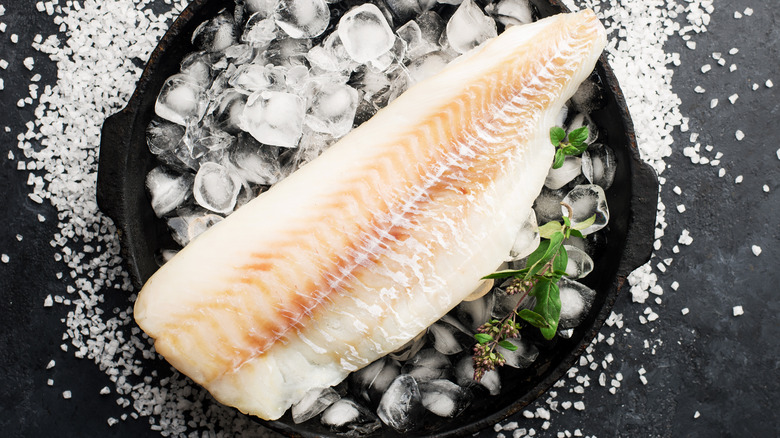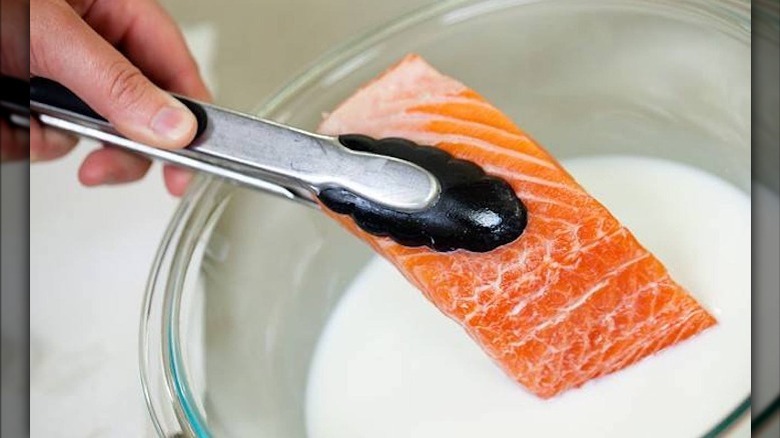Thawing Frozen Fish In Milk Is An Underrated Flavor Booster
Say you're hit with a sudden craving for a savory salmon, cod, or tilapia dish, but the only fillets you have on hand are currently stashed in your freezer. You also just so happen to have a gallon of milk in your fridge. What on earth do frozen fish and milk have in common, you ask? Well, perhaps it sounds bizarre, but thawing frozen fish in milk is an effective cooking hack every aquatic cuisine lover should know about. The reasons why this trick totally works are the opposite of fishy.
For starters, milk contains lots of enzymes that help to break down the proteins in the fish, making it even more tender and flavorful. Additionally, milk also helps to remove any putrid odors or flavors that may be present in the meat, resulting in a taste that resembles that of a fresh catch. This is especially helpful if you are using frozen fish that has been stored for a long time.
Milk helps maintain fish's flavor and keeps it succulent
Another benefit of thawing frozen fish in milk is that it can help to keep the fish moist during the cooking process. The milk creates a barrier between the fish and the heat source, preventing it from drying out too much. This is key if you are preparing a more delicate type of fish, such as cod or tilapia, which can easily become too tough if overcooked.
To thaw frozen fish in milk, simply place the fish in a bowl or container and pour enough milk over it to cover it completely. Make sure the entire filet is submerged. You can use any type of milk, including whole milk, skim milk, or even coconut milk if you have a lactose intolerance or prefer non-dairy milks. Place the container in the refrigerator and allow the fish to defrost slowly over several hours or overnight. Once the fish is fully thawed, drain the milk and proceed with whipping up your favorite recipe on the stovetop or grill or in the oven or deep fryer.

